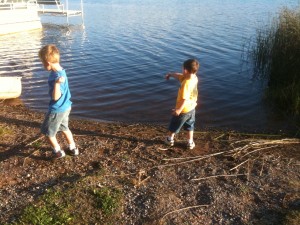In this article, innovation author Robert F. Brands uses the story of the race to the South Pole to draw lessons about best practices and innovation.
I’m in complete agreement with the ideas he’s trying to reinforce, that the best innovation combines the use of best practices and new ideas. Good messages, though, are no excuse for misreading – or misrepresenting – history.
Brands accuses British explorer Robert Falcon Scott of poor planning and use of “mere ‘innovation'” (Brands’ words) and attributes to Norwegian adventurer Roald Amundsen a near-magical combination of best practices and real innovation.
But I personally find it unsettling and off-putting to read as someone sits in modern comfort and harshly judges the actions of far more courageous and ambitious men of a different time simply because their efforts ended poorly. Brands glosses quickly over Scott’s earlier successful mission in the Antarctic, and gives no attention whatever to any reasoning that might have been behind the decisions Scott made in preparing for his quest for the pole. Brands repeatedly accuses Scott of hurried preparation, yet makes no argument that that precludes successful innovation. And Scott was hurrying, because he knew others had designs on his prize; Shackleton had gotten awfully close just before Scott’s attempt. Amundsen may have been less hurried, but only because he was well-prepared for a race in which he’d already failed: his objective became the South Pole after he was beaten to his original goal, the North Pole, by Peary.
It seems to me that Brands makes enormous, unsupported leaps as he looks at the Scott expedition’s failure and assigns malignity and ineptitude of various sorts to its leader. For example, he is scathing in his indictment of Scott’s use of motorized sledges that failed in the harsh conditions Scott faced; yet Amundsen himself greatly feared that those sledges might lead to Scott’s victory. Brands is equally dismissive of Scott’s use of horses, which indeed turned out to be a poor choice; yet none other than Shackleton, holder at that point of the record for reaching the furthest point to the south, thought they offered the best approach.
Brands mentions not once the very different weather and conditions that each expedition experienced (Amundsen’s team had surprisingly good weather through nearly its whole expedition, while Scott faced unspeakably harsh weather almost constantly). He therefore ignores a very real factor that people who believe all failures are avoidable simply can’t face: luck. The human condition is such that, regardless of planning, our best and most noble efforts can be thwarted by bad luck or bolstered by good. Prospective innovators, no matter how smart or well-prepared, aren’t immune to this reality.
I think a lesson completely different from Brands’ can fairly be drawn from the story of the race to the South Pole. It is that, when men march into the unknown toward a goal they know could cost them their lives, it sometimes will; lives of pure success and safety aren’t ours even when we take no risks at all, so they assuredly aren’t part of pursuing great things and taking the related great risks. But of course, none of that has anything whatever to do with innovation.
Ross D.E. MacPhee, author of Race to The End: Amundsen, Scott, and the Attainment of the South Pole, (an absolutely magnificent book, by the way) had this to say about Scott:
Yet for all his obvious, documented failings there is a full measure of countervailing evidence concerning Scott’s strength of character, his sense of justice, his willingness to do anything and everything he asked his men to do. It is just not conceivable that this man, who conducted not one but two expeditions to Antarctica, who had veterans and novices alike clamoring for positions on his team, was the blubbering, unstable incompetent that some authors have made him out to be. Scott may never receive the level of approbation that Shackleton has recently enjoyed, in part because Shackleton’s apotheosis came for him comfortably late, long after the chief participants in his expeditions had died. Scott comes with much more baggage, and with a list of virtues that were considered exemplary in upper-class, prewar Britain, but which have little resonance today.
I for one think our society would be the better were we able to turn things around and have Scott’s virtues once more celebrated. Indeed, today’s best innovations may involve returning to notions from the past that we’ve foolishly cast off. But that kind of thinking probably won’t get me published as a leadership or innovation “expert.”






